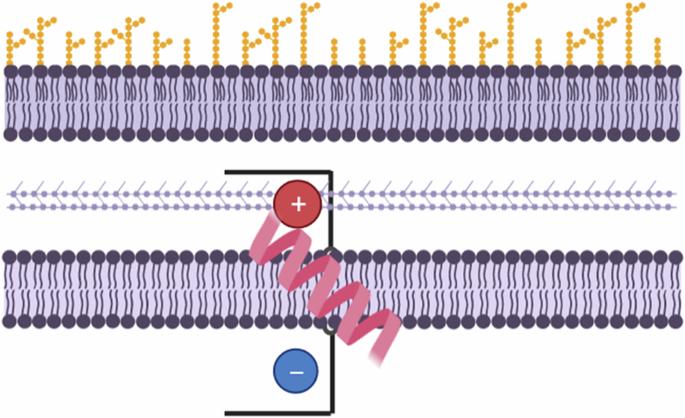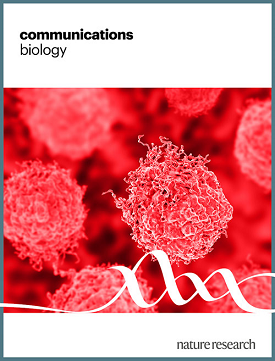Chemically diverse antimicrobial peptides induce hyperpolarization of the E. coli membrane
IF 5.2
1区 生物学
Q1 BIOLOGY
引用次数: 0
Abstract
The negative membrane potential within bacterial cells is crucial in various essential cellular processes. Sustaining a hyperpolarised membrane could offer a novel strategy to combat antimicrobial resistance. However, it remains uncertain which molecules are responsible for inducing hyperpolarization and what the underlying molecular mechanisms are. Here, we demonstrate that chemically diverse antimicrobial peptides (AMPs) trigger hyperpolarization of the bacterial cytosolic membrane when applied at subinhibitory concentrations. Specifically, these AMPs adopt a membrane-induced amphipathic structure and, thereby, generate hyperpolarization in Escherichia coli without damaging the cell membrane. These AMPs act as selective ionophores for K+ (over Na+) or Cl− (over H2PO4− and NO3−) ions, generating diffusion potential across the membrane. At lower dosages of AMPs, a quasi-steady-state membrane polarisation value is achieved. Our findings highlight the potential of AMPs as a valuable tool for chemically hyperpolarising bacteria, with implications for antimicrobial research and bacterial electrophysiology. Antimicrobial peptides with membrane-induced structure generate diffusion potential across the E. coli cytosolic membrane at subinhibitory concentrations. The differential ion permeability generates bacterial hyperpolarization.

化学多样性抗菌肽诱导大肠杆菌膜超极化。
细菌细胞内的负膜电位对各种基本细胞过程至关重要。维持超极化膜可为对抗抗菌药耐药性提供一种新策略。然而,哪些分子负责诱导超极化以及潜在的分子机制是什么,目前仍不确定。在这里,我们证明了化学性质不同的抗菌肽(AMPs)在亚抑制浓度下会引发细菌细胞膜超极化。具体来说,这些 AMPs 采用膜诱导的两性结构,从而在不破坏细胞膜的情况下在大肠杆菌中产生超极化。这些 AMPs 对 K+(而不是 Na+)或 Cl-(而不是 H2PO4- 和 NO3-)离子起选择性离子发声作用,产生跨膜扩散电位。在较低剂量的 AMPs 作用下,膜极化值达到准稳态。我们的研究结果凸显了 AMPs 作为化学超极化细菌的重要工具的潜力,对抗菌研究和细菌电生理学具有重要意义。
本文章由计算机程序翻译,如有差异,请以英文原文为准。
求助全文
约1分钟内获得全文
求助全文
来源期刊

Communications Biology
Medicine-Medicine (miscellaneous)
CiteScore
8.60
自引率
1.70%
发文量
1233
审稿时长
13 weeks
期刊介绍:
Communications Biology is an open access journal from Nature Research publishing high-quality research, reviews and commentary in all areas of the biological sciences. Research papers published by the journal represent significant advances bringing new biological insight to a specialized area of research.
 求助内容:
求助内容: 应助结果提醒方式:
应助结果提醒方式:


